Unveiling the Charm of 2 Bedroom House Plans with Open Floor Plans
Introduction:
In the realm of modern architecture and interior design, the concept of open floor plans has gained immense popularity. This design approach breaks down traditional barriers, creating fluid spaces that enhance connectivity and functionality. When applied to 2-bedroom house plans, the result is a harmonious blend of intimacy and openness. In this article, we will explore the allure of 2 bedroom house plans with open floor plans, delving into their benefits, design considerations, and answering frequently asked questions.
1. The Essence of Open Floor Plans
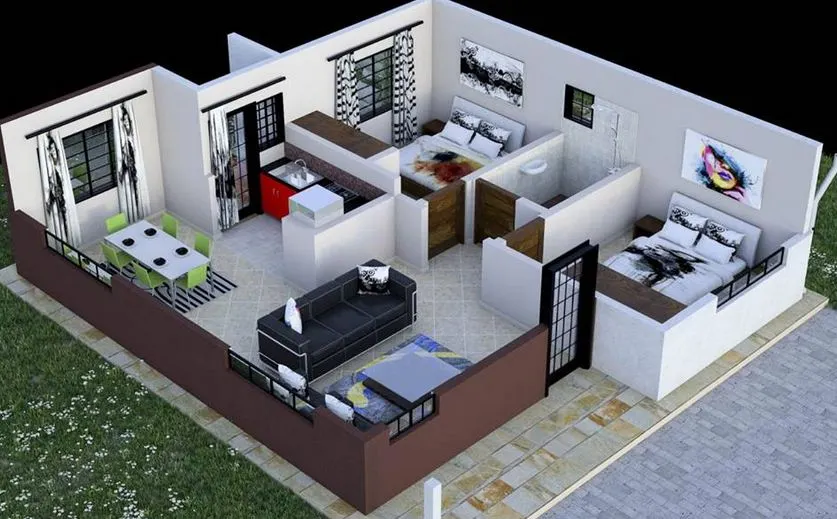
1.1 Defining Open Floor Plans Open floor plans eliminate the conventional separation of rooms by incorporating shared spaces for living, dining, and kitchen areas. This design philosophy promotes a sense of spaciousness, encouraging a seamless flow between different zones within the home.
1.2 Advantages of Open Floor Plans in 2-Bedroom Houses
- Maximizing Space: Open layouts create an illusion of larger space, making 2-bedroom homes feel more expansive and airy.
- Improved Social Interaction: The absence of walls fosters better communication and interaction among residents and guests.
- Enhanced Natural Light: Unobstructed spaces allow natural light to penetrate deeper into the living areas, creating a bright and welcoming atmosphere.
2. Tailoring 2 Bedroom House Plans for Openness
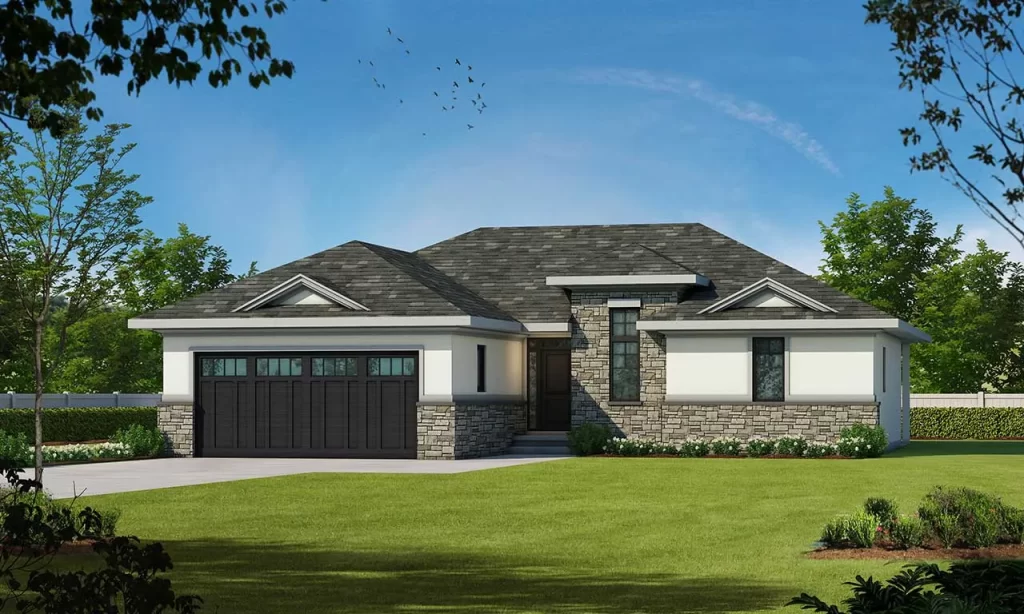
2.1 Strategic Placement of Rooms To make the most of open floor plans in 2-bedroom homes, architects strategically position bedrooms and private spaces while keeping communal areas interconnected. This ensures privacy without compromising the open feel of the layout.
2.2 Inclusive Design Features
- Sliding Doors: Replace traditional doors with sliding doors to maintain flexibility and openness.
- Multifunctional Furniture: Opt for furniture that serves multiple purposes to maximize functionality in a limited space.
- Cohesive Color Schemes: Use consistent color schemes throughout the open spaces to create visual unity.
3. Popular 2 Bedroom House Plan Layouts
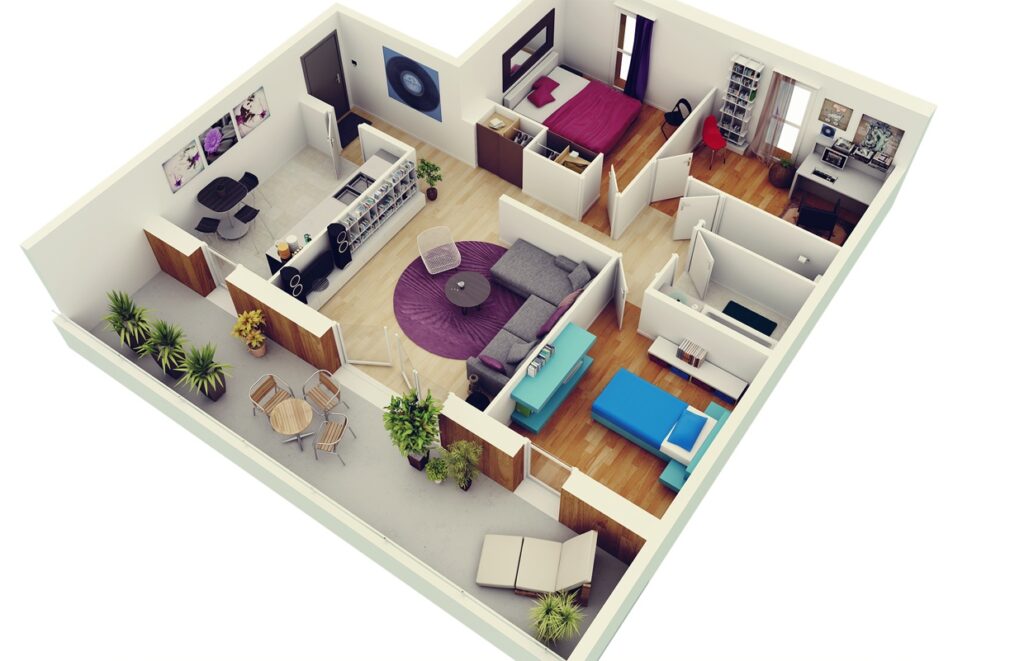
3.1 The Lofted Retreat This layout involves placing one of the bedrooms on a lofted space, creating a visually distinct area while maintaining an open connection to the lower level.
3.2 L-Shaped Configurations L-shaped designs optimize space utilization, allowing for a clear separation of bedrooms while ensuring an open and interconnected living space.
3.3 Centralized Living Core In this layout, the living, dining, and kitchen areas are centrally located, with bedrooms flanking the core. This arrangement ensures a balanced and cohesive flow throughout the house.
4. Design Considerations for 2 Bedroom Open Floor Plans
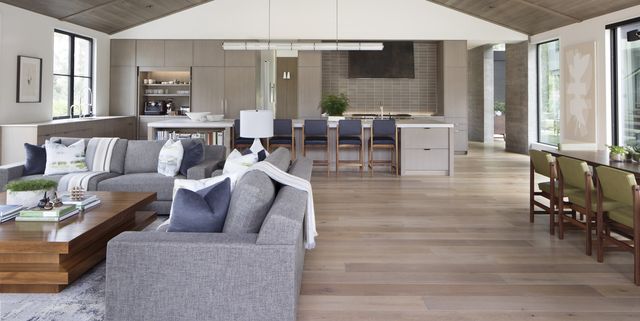
4.1 Scale and Proportion Balancing the scale of furniture and architectural elements is crucial to maintaining a harmonious aesthetic in open spaces.
4.2 Connectivity without Compromise While openness is the goal, thoughtful design should ensure that privacy is not sacrificed. Utilizing partial walls, furniture, or visual dividers can help achieve this delicate balance.
4.3 Zoning for Functionality Define specific zones within the open layout to serve distinct purposes, such as a cozy reading nook, a work-from-home space, or an entertainment area.
5. Addressing Common Concerns
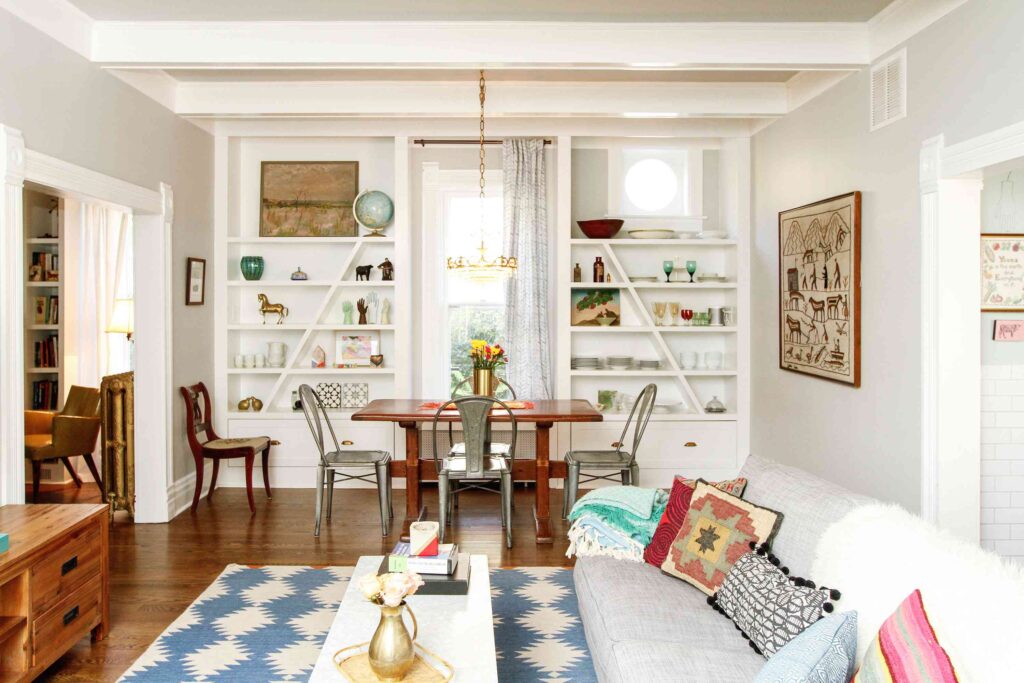
5.1 Privacy in Open Spaces Striking a balance between openness and privacy can be achieved through strategic furniture placement, the use of room dividers, or even innovative design elements like built-in shelving.
5.2 Storage Challenges Implementing creative storage solutions, such as built-in cabinets, multifunctional furniture with hidden compartments, and optimizing vertical space, helps overcome storage limitations in smaller homes.
5.3 Flexibility for Future Modifications An advantage of open floor plans is their adaptability. Future modifications and expansions can be more easily accommodated compared to traditional segmented layouts.
Frequently Asked Questions (FAQs)
Q1: Are 2-bedroom houses with open floor plans suitable for families?
A1: Yes, open floor plans can be family-friendly, promoting better interaction and a sense of togetherness. Strategic design choices can address privacy concerns.
Q2: How can I add a personal touch to an open floor plan?
A2: Personalization can be achieved through furniture selection, artwork, and color schemes. Design elements that reflect your style can add character to the space.
Q3: What are the challenges of furnishing an open floor plan?
A3: Furniture placement is crucial. Choose pieces that complement the scale of the space and use area rugs or furniture groupings to define different zones within the open layout.
Q4: Can open floor plans be energy-efficient?
A4: Yes, open floor plans can enhance natural light penetration, reducing the need for artificial lighting during the day. Proper insulation and energy-efficient appliances further contribute to overall energy savings.
Q5: How do I maintain a clean look in an open space with limited storage?
A5: Optimize storage with built-in cabinets, utilize under-bed storage, and invest in furniture with hidden compartments. Regular decluttering is also essential to maintain a clean and organized appearance.
Q6: Are there specific color schemes that work best in open floor plans?
A6: Neutral and cohesive color schemes work well in open spaces, creating a unified look. However, pops of color can be strategically incorporated to add visual interest.
Q7: Can open floor plans be implemented in smaller homes without sacrificing functionality?
A7: Yes, open floor plans are particularly beneficial in smaller homes as they create an illusion of more space. Multifunctional furniture and thoughtful design can maximize functionality.
Q8: What role do outdoor spaces play in enhancing open floor plans?
A8: Outdoor spaces can be an extension of the open floor plan, blurring the lines between indoor and outdoor living. Patios or balconies can serve as additional areas for relaxation and entertainment.
Q9: Are there cost implications in implementing open floor plans?
A9: While the initial construction costs may vary, open floor plans can potentially save money in the long run through reduced energy consumption and the flexibility to adapt the space without major renovations.
Q10: How can acoustics be managed in open floor plans to avoid noise disruptions?
A10: Use area rugs, curtains, and wall treatments to absorb sound. Additionally, consider strategic furniture placement to minimize sound echoes and disturbances.
Conclusion:
2-bedroom house plans with open floor designs offer a perfect blend of intimacy and expansiveness. By carefully considering layout options, design elements, and addressing common concerns, homeowners can create a space that not only meets their functional needs but also enhances their overall living experience. The flexibility and adaptability of open floor plans ensure that these homes remain inviting and accommodating for years to come.


